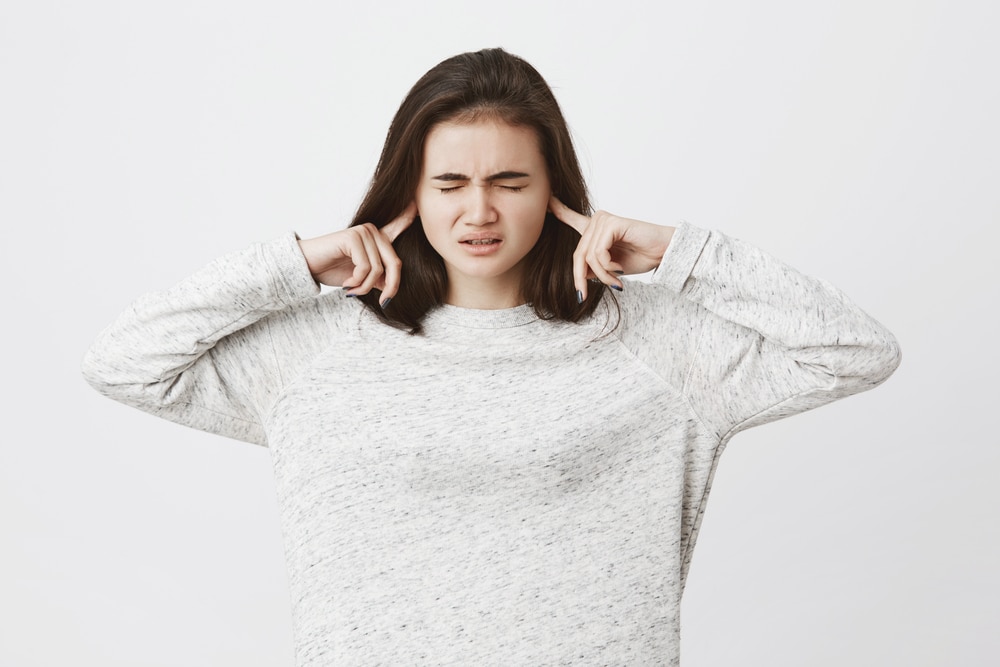
Can Earwax Cause Hearing Loss?
Earwax or cerumen is a natural substance designed to clean and protect your ear canals by trapping dust and debris while helping to prevent infections. However, this protective mechanism can be disrupted, leading to an accumulation and blockage known as cerumen impaction.
Earwax buildup can cause temporary hearing loss, as well as a feeling of ‘fullness’, ringing in the ears (tinnitus), and even dizziness. Because of this, knowing the signs of earwax blockage and the proper steps and therapy for hearing loss management is fundamental to maintaining good auditory health.
What Is Earwax and Why Do We Have It?
Earwax is a combination of secretions from oil and sweat glands, mixed with dead skin cells and hair. Its appearance can vary significantly among individuals, ranging in color from light yellow to dark brown, and in consistency from soft and wet, to hard and dry. This variation is normal and often determined by genetics, age, and diet.
Far from being an indicator of poor hygiene, cerumen is a critical component of your ear’s defense system. It performs several key functions essential for hearing health, and some of these include:
- Lubrication and Protection: Cerumen acts as a natural lubricant for the skin within the ear canal. Its moisturizing effect helps to ward off dryness, flaking, and itchiness, thereby playing a vital role in keeping the canal healthy and comfortable.
- A Protective Barrier: Its sticky texture acts as a natural trap, catching dust, dirt, and other foreign particles before they can travel deeper into the ear and potentially damage the sensitive eardrum. It also has properties that help repel water, reducing the risk of moisture-related infections.
- Antimicrobial Defense: Cerumen is naturally acidic, creating an environment that inhibits the growth of bacteria and fungi. It contains specific enzymes with antibacterial properties that actively block pathogens, serving as your ear’s first line of defense against infection.
Symptoms of Earwax Buildup or Blockage
A clear set of symptoms characterizes earwax impaction, and recognizing these indicators is essential for determining if an earwax blockage is the source of your muffled hearing.
- Muffled Hearing or Partial Hearing Loss: The most common symptom of a blockage is a noticeable reduction in hearing clarity. This is because the impacted wax creates a physical barrier that obstructs sound waves from reaching the eardrum, a condition known as conductive hearing loss.
- Tinnitus: You may experience a ringing, buzzing, or hissing sound in the ear that is not from an external source. Pressure from the blockage on the tympanic membrane (eardrum) can trigger this condition.
- Sensation of Fullness: A persistent feeling that the ear is plugged, full, or under pressure is a frequent complaint.
- Earache and Discomfort: Hardened wax pressing against the sensitive skin of the ear canal can cause a dull, persistent ache or even sharp pain.
- Dizziness or Vertigo: In more severe cases, a deep impaction can affect the inner ear’s vestibular system, which is crucial for maintaining balance. A disruption to this system can lead to dizziness or a spinning sensation.
- Itchiness: The blockage can irritate the delicate skin lining the ear canal, causing a persistent itch from within the ear.
Causes of Earwax Problems
Cerumen impaction typically occurs when the ear’s natural, self-cleaning migration process is disturbed. Although some individuals are naturally prone to overproducing wax, blockages are most often caused by external factors that interfere with the ear’s ability to clear itself.
The factors that lead to problematic earwax buildup include:
- Improper Cleaning Attempts: The most frequent cause of impaction is the use of objects to clean the ear canal. Items like cotton swabs, napkin corners, or bobby pins push wax deeper toward the eardrum rather than removing it. A compacted plug of wax from these attempts is a primary and preventable cause of earwax blockage, hearing loss, and can even damage sensitive ear structures.
- Use of In-Ear Devices: Regular use of hearing aids, earbuds, or earplugs can physically obstruct the natural exit path for cerumen. Over time, these devices can prevent wax from migrating out, leading to accumulation and blockage.
- Natural Overproduction: Some individuals are simply predisposed to producing more cerumen than their ears can effectively manage on their own, resulting in a gradual buildup that eventually requires professional attention.
- Frequent Swimming: Exposure to water does not necessarily trigger more earwax production, but it can cause existing cerumen in the ear canal to swell and expand, creating a sudden blockage and hearing loss.
Who’s at Risk?
While anyone can develop an earwax blockage, certain anatomical and physiological factors can significantly increase an individual’s risk of hearing loss because of earwax. Understanding these predispositions is helpful for proactive ear care.
Individuals with the following conditions are more susceptible:
- Anatomical Variations: People with naturally narrow, curved, or surgically altered ear canals may find that wax does not exit as easily. Similarly, excessively hairy ear canals can trap cerumen and impede its natural outward migration.
- Age-Related Changes: As individuals age, the ceruminous glands tend to produce wax that is drier and harder. This less pliable consistency makes it more difficult for the ear’s self-cleaning mechanism to expel.
- Benign Growths (Osteomata): Osteomata are minor, benign growths of bone that can appear in the auditory canal. They can function as a physical barrier, effectively blocking the passage of cerumen and disturbing the ear’s self-cleaning process.
- Chronic Skin Conditions: Inflammatory skin issues like eczema or psoriasis affecting the ear canal can cause increased skin shedding or altered wax production, contributing to a faster buildup.
- Underlying Health Conditions: A history of repeated ear infections can cause scarring or changes that affect wax clearance. Additionally, certain autoimmune diseases, such as lupus, can cause inflammation that interferes with the normal function of the ear canal.
When to Seek Medical Treatment
If you are experiencing persistent symptoms of an earwax blockage, it is crucial to seek professional attention. Attempting to remove impacted wax at home with objects, such as cotton swabs or other tools, can push the blockage deeper, scratch the ear canal, or even cause permanent damage to your eardrum or hearing loss.
The recommended course of action is to consult with an ENT (Ear, Nose, and Throat) specialist. A professional will use a lighted instrument called an otoscope to inspect your ear canal visually, diagnose the extent of the cerumen impaction, and provide advice on the most appropriate treatment.
Professional Removal Methods
Based on the diagnosis, an ENT Doctor may use one of the following safe and effective removal techniques:
- Cerumenolytic Agents (Ear Drops): A doctor may advise the use of specific cerumenolytic agents (ear drops). These solutions are formulated to break down and liquefy impacted cerumen, facilitating professional extraction or promoting the ear’s natural clearance process.
- Ear Irrigation: This procedure involves using a controlled, gentle stream of warm, sterile water or saline solution to flush the impacted wax out of the ear canal.
- Manual Removal (Microsuction): A doctor uses a high-powered microscope for a clear view of the ear canal while using fine, specialized instruments or a gentle suction device to remove the wax. This dry technique is often preferred for severe impactions or for patients with certain ear conditions.
Important Considerations for Ear Irrigation
It is essential to understand that ear irrigation is not a suitable procedure for everyone. A doctor will determine if it is safe for you. This method is generally avoided in patients with:
- A current or past perforation of the eardrum
- Tympanostomy tubes (grommets), commonly used in children
- A history of recent ear surgery
- An active ear infection or discharge
- A past adverse reaction or complications from irrigation
Still Can’t Hear Well After Wax Removal?

For most individuals, the removal of an earwax blockage provides relief and a distinct return of hearing clarity. However, if your hearing remains muffled or unclear, it should be regarded as a critical indicator that the earwax was masking an underlying auditory condition.
It is possible that the temporary hearing difficulty from the wax buildup was obscuring an underlying problem, like sensorineural hearing loss.
To identify the root cause of your condition, it is recommended to consult with a qualified audiologist for a comprehensive hearing assessment in the Philippines to measure the nature, type, and degree of any persistent hearing loss. This professional evaluation provides the foundation for an effective management plan, which may include hearing solutions, such as Widex hearing aids, designed to help you rediscover clarity and reconnect with the sounds of your life.










